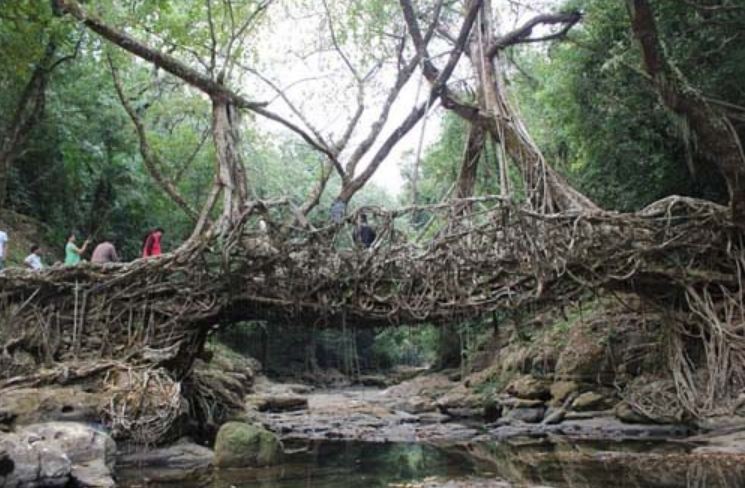The natural living root bridge is one of nature’s beautiful creations built to cross the rivers within the forest about years ago. The natural living bridge is present on the way to the Mawlynnong village. Wonderful greenery as you move towards the villages from the highway. Narrow roads enter from the main highways towards the bridge.
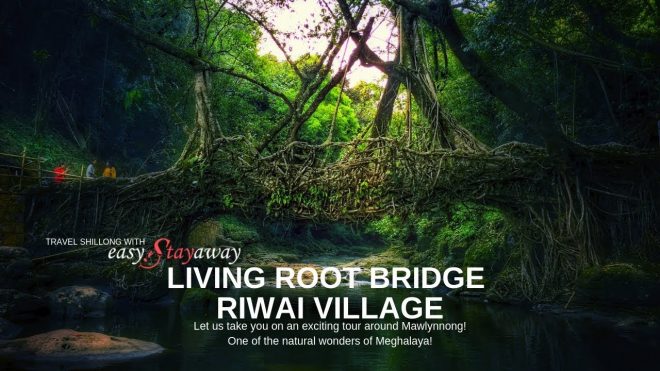
History of Living Root Bridge
This living root bridge is located near Cherrapunji and Mawsynram they are the wettest place in the world. The highest rainfall is observed in these areas it was during the rainy season when rivers and lakes flooded and Khasi people found it difficult to cross the rivers as it used to be flooded with the continuous and highest rainfall.
Construction of the bridge is manmade they used the longest and strong roots of rubber plants. Rubber plants have the characteristics of bending, tying, and developing the bridge. The roots of the planted rubber plants require at least 10 years to grow its roots to 30 years. This bridge developed by the Khasi tribes is still witnessed by us.
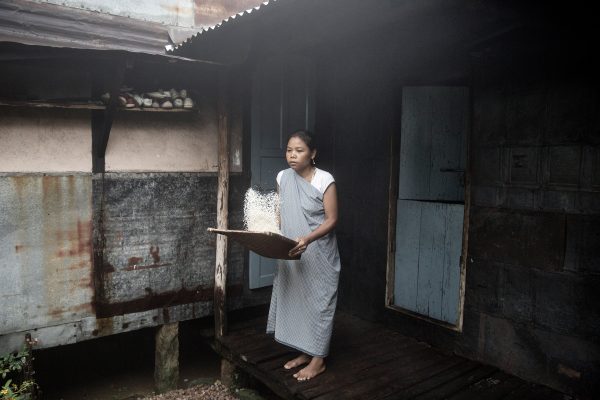
The bridge can survive for centuries, and if you trek around the villages more than one natural living root bridge is seen in the villages of Meghalaya. Biological and technical knowledge of the tribe can be assumed after looking into the natural conception of building a bridge without structural or material calculation.
Trees were planted on the sides of the bank when the rainfall was less and allowed to grow of the trees. Though it was not easy in the area of high rainfall as chances of flowing down of plants were maximum.
After the rubber tree roots grew they were twisted and tied allowing them to grow up to form a natural root bridge. It is an eco-friendly example that supports the growth of greenery that increases the conserving earth and its nature.
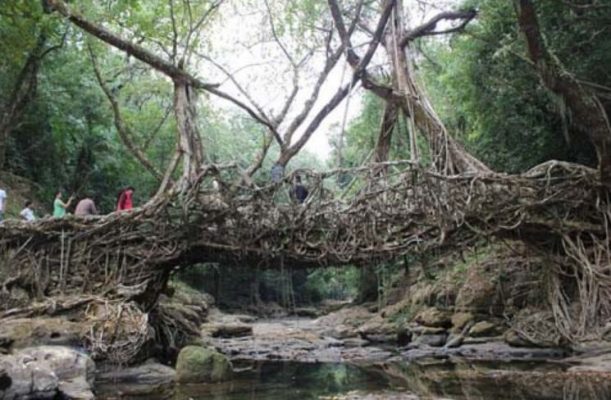
Ferdinand Ludwig decides to use the phenomenon for eco-friendly environment
Professor of green technologies in landscape architecture, Ferdinand Ludwig from the University of Munich and Thomas Speck who is a botany professor of the University of Freiburg together have worked, researched on 74 bridges.
In 2019 Ferdinand Ludwig and Thomas Speck, a group of researchers from Germany had visited Meghalaya to understand and study the living root bridges. According to them, this can act as a specimen for modern architecture. In recent modern architectural designs that are inclined to work on the development of eco-friendly structures. The living root bridge is a unique survival of architecture within the village of East Khasi Hills, Meghalaya.
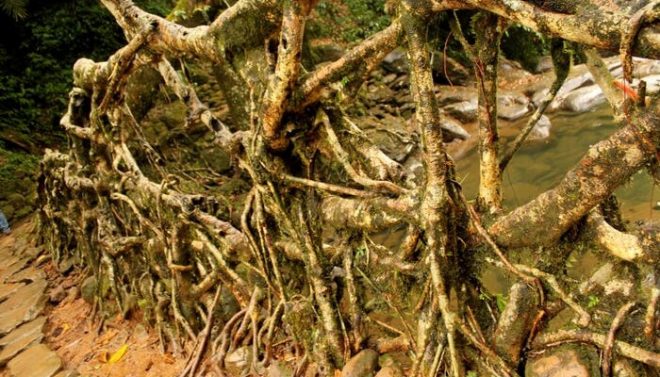
Photographs of the living bridges are taken to work on the development of 3D slides of the bindings and ties of the roots of the rubber trees. For gathering knowledge about the bridge the researchers met the local tribes and builders, maintenance groups to understand the concept of the structure of the living root bridge.
According to Ludwig, this is highly beneficial when the architects and their designs look for high green infrastructure in urban or cities. Cities require higher green infrastructure to reduce air pollution and this concept can heal a great part of the damaged atmosphere.

